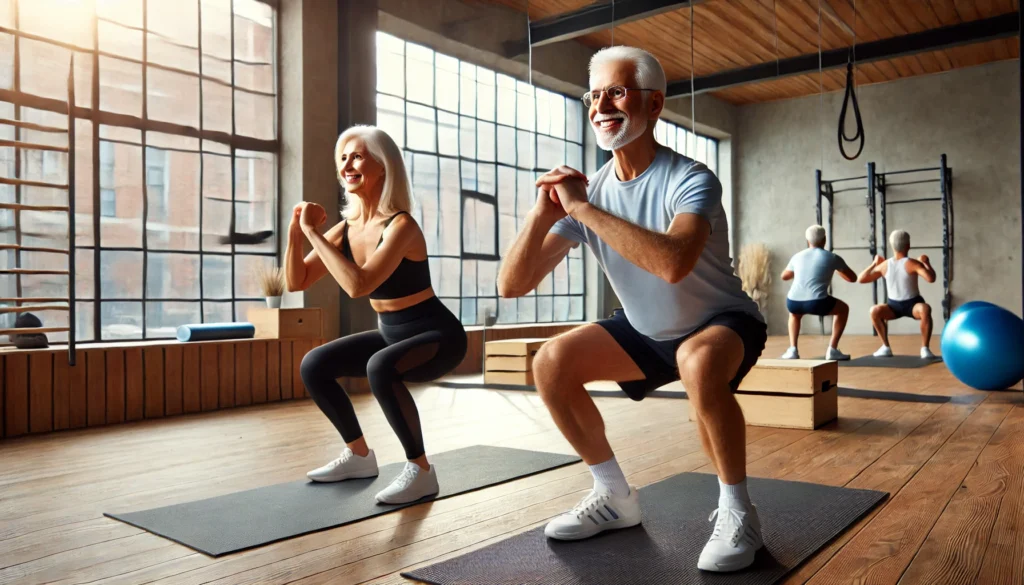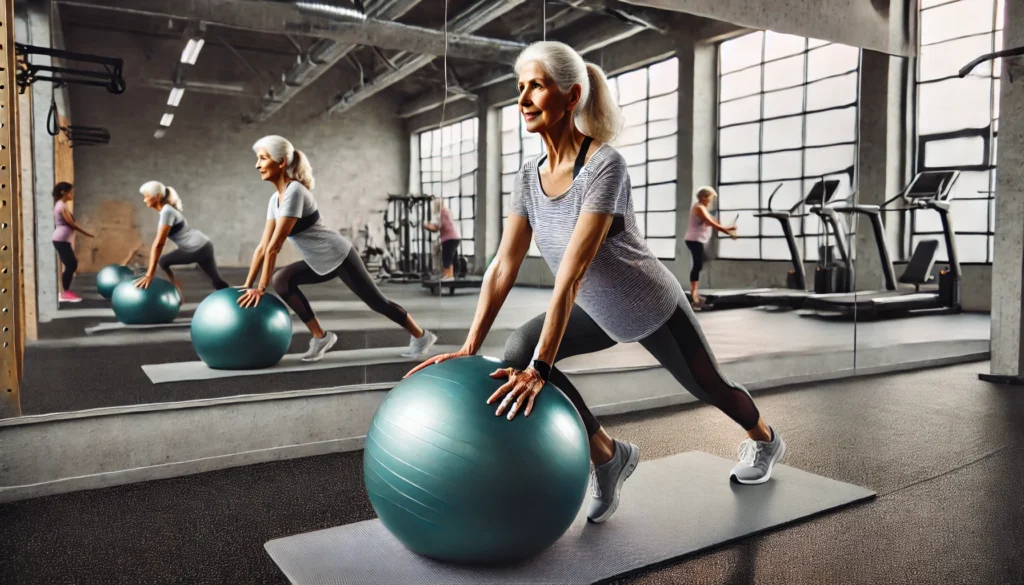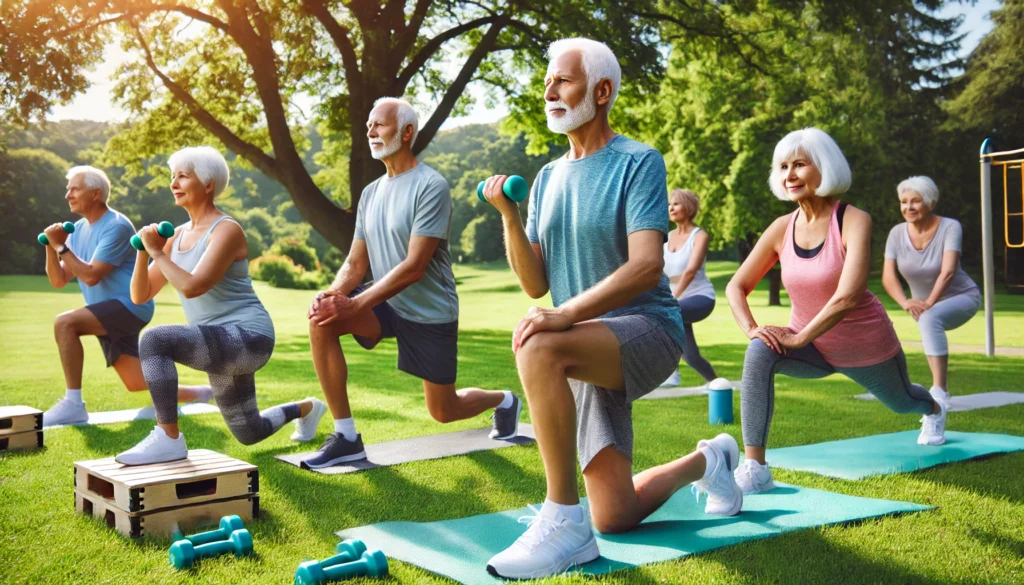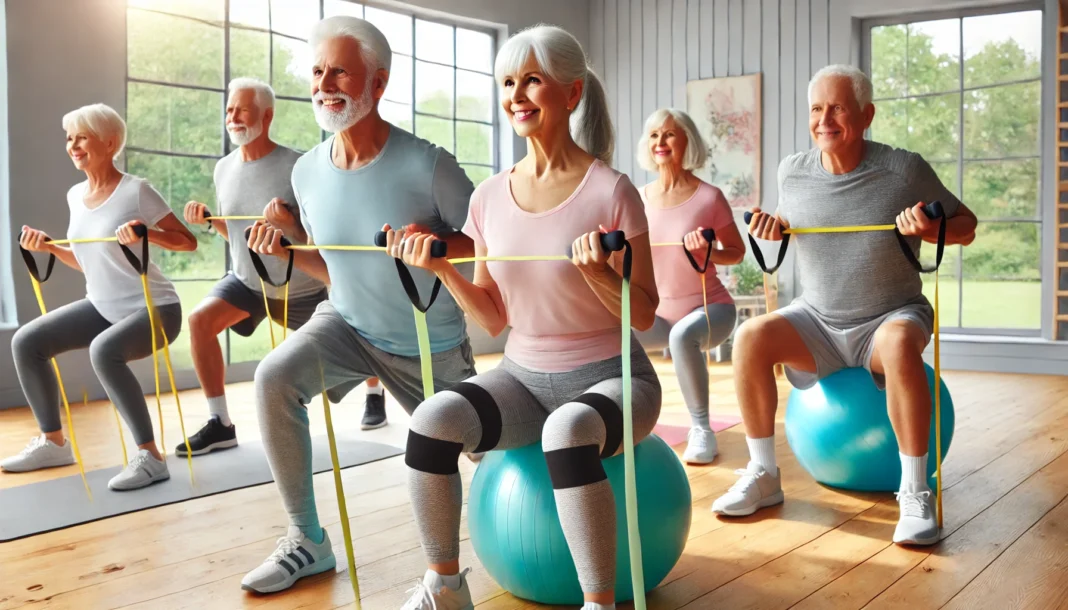The Importance of Functional Fitness for Seniors
As individuals age, maintaining mobility, strength, and independence becomes increasingly crucial. Functional fitness provides seniors with the ability to perform daily activities with ease and confidence. Unlike traditional exercise programs that focus solely on muscle isolation, functional fitness for seniors emphasizes movement patterns that mimic real-life activities such as bending, lifting, reaching, and walking. By integrating these natural movements into a structured fitness routine, older adults can enhance their overall quality of life while reducing the risk of falls and injuries.
Aging leads to natural declines in muscle mass, flexibility, and balance, making daily activities more challenging. Functional fitness exercises for seniors target the core muscle groups responsible for stability and coordination. When seniors engage in functional training, they develop strength in key areas such as the legs, hips, back, and shoulders—allowing them to move more efficiently and safely. Functional training also improves cardiovascular endurance, ensuring that older adults can sustain physical activity without undue fatigue.
Beyond physical health, functional fitness has a profound impact on mental well-being. Studies have shown that exercise can boost cognitive function, reduce stress levels, and promote better sleep. When seniors participate in functional strength training for seniors, they not only enhance their physical capabilities but also experience increased confidence in their movements. This sense of self-sufficiency plays a vital role in preserving independence and preventing reliance on assisted living services.
You May Also Like: Functional Strength Training: The Key to Mobility, Power, and Everyday Performance

How Functional Exercises Improve Mobility and Balance
Mobility and balance are two of the most critical components of overall health for older adults. As aging occurs, joint stiffness and muscle weakness can lead to mobility impairments, increasing the risk of falls. Engaging in functional exercises for seniors ensures that movement remains fluid and efficient, allowing older adults to maintain an active lifestyle with minimal limitations.
One of the primary benefits of functional training is its ability to enhance joint flexibility. Movements such as lunges, squats, and seated stretches improve the range of motion in the hips, knees, and shoulders. By maintaining flexibility in these joints, seniors can move more freely and with greater ease. Functional training also incorporates rotational movements, helping to maintain spinal mobility, which is essential for everyday tasks like twisting to reach objects or turning while walking.
Balance is another crucial aspect of functional fitness. Poor balance increases the likelihood of falls, which are a leading cause of injury in older adults. Functional training incorporates stability exercises such as single-leg stands, heel-to-toe walking, and chair-assisted squats. These exercises strengthen the muscles responsible for maintaining balance while also improving proprioception—the body’s ability to sense its position in space. By engaging in functional core stability exercises, seniors can develop a more stable center of gravity, reducing the risk of falls and improving confidence in their movements.
The Role of Functional Strength Training in Daily Activities
Functional strength training focuses on developing the muscles needed for daily activities, such as getting out of a chair, carrying groceries, or climbing stairs. Unlike conventional strength training, which often isolates individual muscles, functional strength training for seniors incorporates multi-joint movements that mimic real-world activities.
For example, performing step-ups on a low platform strengthens the quadriceps and glutes, muscles that are essential for climbing stairs. Similarly, exercises like farmer’s carries—where individuals hold weights and walk a certain distance—build grip strength and endurance, making it easier to carry bags or household items. Strengthening these movement patterns ensures that seniors can continue to perform everyday tasks without difficulty.
Functional strength training also plays a key role in preserving bone density. Weight-bearing exercises, such as resistance band squats or light dumbbell presses, stimulate bone growth and reduce the risk of osteoporosis. As bone mass naturally decreases with age, maintaining strength through functional exercises for elderly can help prevent fractures and maintain skeletal health.

Creating an Effective Functional Fitness Routine for Seniors
A well-rounded functional fitness workout for seniors should include exercises that target strength, mobility, balance, and endurance. Each session should begin with a warm-up to prepare the muscles and joints for movement. Dynamic stretches, gentle arm circles, and slow leg swings are effective ways to loosen the body and enhance circulation before engaging in more strenuous exercises.
Core stability exercises should be prioritized, as they provide the foundation for all movement. Gentle seated twists, pelvic tilts, and modified planks can help strengthen the core without placing excessive strain on the spine. A strong core improves posture and reduces the risk of lower back pain, which is a common concern for many seniors.
For strength development, resistance-based movements such as chair squats, wall push-ups, and resistance band rows should be incorporated. These exercises build muscular endurance and promote joint stability, ensuring that seniors can perform daily activities without discomfort. It is important to start with light resistance and gradually progress as strength improves.
Balance exercises should also be a fundamental component of any functional fitness program. Tandem walking (walking heel to toe in a straight line), standing on one leg, and using balance pads can help seniors develop greater control over their movements. Practicing these exercises consistently reduces the risk of falls and improves overall coordination.
Lastly, cardiovascular endurance should not be overlooked. Low-impact aerobic activities such as brisk walking, cycling on a stationary bike, or water aerobics improve heart health and stamina. Short bursts of activity interspersed with rest periods allow seniors to build endurance without overexertion. Regular participation in these activities helps maintain lung capacity and reduces the likelihood of cardiovascular diseases.

Frequently Asked Questions (FAQ) on Functional Fitness for Seniors
1. How does functional fitness for seniors support mental well-being and cognitive function?
Engaging in functional fitness for seniors promotes mental well-being by reducing stress, anxiety, and symptoms of depression. The structured movement patterns in functional exercises for seniors enhance brain function by improving blood flow and stimulating the production of brain-derived neurotrophic factor (BDNF), which supports memory and cognitive performance. Studies indicate that seniors who participate in regular physical activity experience slower cognitive decline and improved executive function, which helps with problem-solving and decision-making. Additionally, practicing functional exercises for elderly that involve coordination and balance—such as tandem walking or agility drills—enhances neuroplasticity, allowing the brain to adapt and maintain cognitive sharpness. Regular participation in functional fitness exercises for seniors can delay the onset of neurodegenerative diseases like Alzheimer’s and dementia, contributing to a longer, healthier life.
2. What financial benefits can be gained from incorporating functional strength training for seniors into a wellness plan?
Investing in functional strength training for seniors can lead to long-term financial savings by reducing healthcare costs associated with injuries, physical therapy, and chronic conditions. By improving balance and mobility, functional exercises for seniors decrease the risk of falls, which are a leading cause of hospitalization and expensive medical care in older adults. Regular participation in functional exercises for elderly also helps prevent conditions such as osteoporosis, arthritis, and cardiovascular disease, reducing the need for costly medications and medical treatments. Additionally, seniors who maintain their independence through functional fitness exercises for seniors are less likely to require assisted living services, which can be financially burdensome over time. Prioritizing functional training is a cost-effective strategy for enhancing quality of life while minimizing long-term medical expenses.
3. How does functional exercise for older adults help with joint health and arthritis management?
Functional exercise for older adults is an effective way to maintain joint health, reduce stiffness, and alleviate symptoms of arthritis. Many functional fitness exercises for seniors focus on controlled, low-impact movements that enhance joint mobility without causing excessive strain. Gentle strength-building movements, such as chair squats, resistance band exercises, and water-based training, help strengthen the muscles around joints, providing better support and reducing pain. Regular movement improves circulation, delivering oxygen and nutrients to cartilage and reducing inflammation. Seniors with arthritis can benefit from functional exercises for elderly by maintaining flexibility, reducing stiffness, and enhancing overall mobility, which leads to improved comfort and daily function.
4. How does functional strength training for seniors improve posture and spinal alignment?
Poor posture is a common issue among older adults due to muscle imbalances, weakened core muscles, and prolonged periods of sitting. Functional strength training for seniors helps correct postural misalignments by strengthening the core, back, and shoulder muscles responsible for maintaining an upright position. Exercises such as seated rows, dead bugs, and thoracic mobility drills promote spinal stability and reduce forward-leaning tendencies. Improved posture reduces the risk of back pain, enhances breathing efficiency, and prevents strain on the neck and shoulders. By incorporating functional fitness exercises for seniors into a routine, older adults can maintain better posture, reducing discomfort and improving overall movement mechanics.
5. How can functional fitness exercises for seniors be adapted for individuals with limited mobility?
Seniors with limited mobility can still benefit from functional exercises for elderly through modified movements that accommodate their range of motion and physical capabilities. Chair-based exercises, resistance band training, and standing balance drills using support can all be adapted to meet individual needs. Water-based functional exercise for older adults is particularly effective for those with joint pain or mobility restrictions, as it reduces impact while providing resistance for strength development. Many exercises can also be performed with assistance, such as wall push-ups, seated leg raises, or modified squats, to build strength progressively. Working with a physical therapist or certified trainer can ensure that functional strength training for seniors is safe and effective, regardless of mobility limitations.
6. How does functional fitness for seniors enhance cardiovascular health and endurance?
Cardiovascular endurance is essential for maintaining independence and performing daily activities without fatigue. Functional fitness for seniors integrates low-impact aerobic exercises such as brisk walking, step-ups, and resistance band movements to improve heart health and stamina. High-repetition, low-resistance exercises increase circulation and strengthen the heart muscle while keeping stress on joints minimal. Interval training, where seniors alternate between short bursts of activity and rest, can also improve oxygen efficiency and overall endurance. By regularly engaging in functional fitness exercises for seniors, older adults can enhance their cardiovascular health, maintain energy levels, and reduce the risk of heart-related conditions.
7. How do functional exercises for elderly contribute to fall prevention and stability?
Falls are one of the most significant health risks for seniors, often leading to injuries that impact independence and mobility. Functional exercises for elderly improve balance, coordination, and lower body strength, all of which are crucial for fall prevention. Stability-based movements, such as heel-to-toe walking, single-leg stands, and side-step drills, train the body to react quickly and maintain control during sudden shifts in balance. Strengthening the hip, ankle, and core muscles provides better support and reduces the likelihood of tripping or stumbling. Practicing functional strength training for seniors consistently improves proprioception—the body’s ability to sense its position in space—leading to greater confidence in movement and a reduced risk of falls.
8. Can functional exercises for seniors help with sleep quality and stress reduction?
Yes, engaging in functional exercises for seniors regularly can improve sleep quality and reduce stress levels. Physical activity helps regulate circadian rhythms, promoting deeper, more restorative sleep cycles. Additionally, exercises that incorporate breathing techniques, such as yoga-inspired mobility drills and gentle stretching, activate the parasympathetic nervous system, reducing anxiety and stress hormones like cortisol. Seniors who participate in functional fitness exercises for seniors often report lower levels of tension and an improved sense of well-being. By maintaining an active lifestyle with functional fitness for seniors, older adults can experience better sleep, reduced stress, and overall emotional balance.
9. How does functional strength training for seniors improve grip strength and hand coordination?
Grip strength is a vital aspect of independence, as it impacts the ability to carry groceries, open jars, and perform fine motor tasks. Functional strength training for seniors includes exercises like farmer’s carries, wrist curls, and resistance band squeezes to enhance hand coordination and forearm strength. Stronger grip strength reduces the risk of dropping objects and improves dexterity, making daily activities easier and safer. Additionally, grip-strengthening exercises help prevent conditions such as carpal tunnel syndrome and arthritis-related stiffness. Regular functional exercises for elderly that focus on hand and forearm strength contribute to better motor control and prolonged functional independence.
10. What is the best way to start a functional fitness routine for seniors safely?
Starting a functional fitness routine for seniors should begin with an assessment of individual mobility, strength levels, and any pre-existing conditions. Consulting a fitness professional or physical therapist can help create a personalized plan that aligns with an individual’s capabilities and goals. The best approach is to begin with low-impact functional exercises for seniors, such as seated leg lifts, modified squats, and core stabilization drills, gradually increasing intensity over time. Emphasizing proper form and controlled movements ensures that seniors build strength safely without unnecessary strain. Incorporating variety, such as alternating between functional strength training for seniors, balance drills, and endurance-building exercises, keeps workouts engaging and promotes long-term adherence.
Conclusion: The Path to a Stronger, More Independent Life
Functional fitness empowers seniors by enhancing strength, mobility, and independence. Unlike traditional exercise programs that focus solely on isolated muscle movements, functional fitness exercises for seniors mimic real-life activities, improving movement efficiency and reducing injury risk. Engaging in functional training ensures that seniors can continue performing everyday tasks with ease, preserving their autonomy and confidence in their abilities.
By incorporating functional exercises for elderly into a regular fitness routine, older adults can maintain joint flexibility, improve balance, and build the strength necessary for daily activities. Whether through resistance training, balance exercises, or cardiovascular conditioning, functional fitness provides a comprehensive approach to aging well. A well-structured fitness plan not only enhances physical capabilities but also supports mental well-being, promoting a more active and fulfilling lifestyle.
For those looking to integrate functional strength training for seniors into their routine, it is essential to start gradually and progress at a comfortable pace. Consulting with a fitness professional or physical therapist can help tailor exercises to individual needs and ensure safe participation. With consistent effort and a commitment to movement, seniors can embrace aging with strength, stability, and independence.
senior fitness, aging and exercise, mobility training for seniors, strength training for older adults, balance exercises for elderly, functional movement training, bone health and fitness, joint mobility exercises, cardiovascular health for seniors, active aging strategies, stability workouts, injury prevention for seniors, adaptive fitness programs, resistance training for elderly, core strengthening for older adults, posture correction exercises, wellness and longevity, safe workouts for seniors, energy-boosting fitness, independent living support
Further Reading:
Functional fitness and psychological well-being in older adults
Functional fitness benchmark values for older adults: a systematic review

